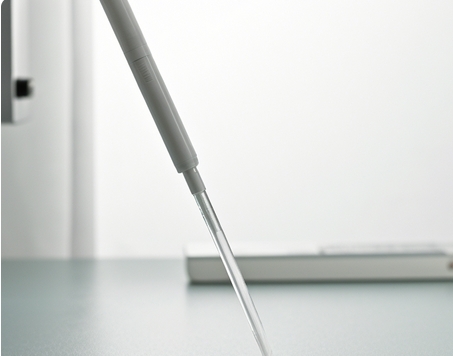
News and Blogs
How to choose a sampling swab? Analysis of the three core technological innovations of genetic testing swabs
The core tool in the revolution in genetic detection technology: a scientific breakthrough in decoding sampling swabs
On the occasion of the 20th anniversary of the completion of the Human Genome Project, molecular diagnostic technology has been deeply integrated into the precision medical system. As the core vector of biological sample collection, gene sampling swabs are undergoing a leap forward from basic tools to smart devices. According to the 2023 annual report of Nature Biotechnology, the global gene sampling swab market size has reached US$4.7 billion, and its technological innovation has directly driven the penetration rate of home testing to 61%.
1. Material innovation-driven technology breaks through modern DNA sampling technology. It has achieved system upgrades from passive collection to active preservation. The third generation product represented by the Macklin 93050D type pharyngeal swab uses electrostatic flocking technology to form more than 5 million nylon microfibers per square centimeter at the handle end. This bristle-like structure significantly increases the sample capture through capillary effect (spontaneous flow of liquid in a narrow space). 80-120μg of genomic DNA can be obtained by a single sampling, which is 300% higher than traditional cotton swabs.
Surface functionalization technology breakthroughs to achieve "integrated procurement and storage" innovation. The flocking swab modified by cationic polymers can form a molecular protective film in combination with DNA stabilizers. The 2022 clinical trial of the National Institutes of Health confirmed that this technology has increased the DNA integrity of samples transported at room temperature from 68% to 92%, which is equivalent to extending the sample validity period from 72 hours to 21 days. The team at the University of Cambridge in the UK has developed a freeze-dried DNA preservation coating so that the swab can store samples stably under -20°C for up to 5 years.
2. Accurate adaptation of multi-scenario solutions. The field of clinical diagnosis has formed a differentiated product matrix: sponge head and cheek mucosal swabs for neonatal screening use medical grade polyvinyl alcohol material, and its elastic modulus (2-3MPa) perfectly matches the soft tissue of the baby's oral cavity, achieving zero trauma sampling. The biological sample collection set for judicial identification integrates lyrate with pH buffering function and silica gel desiccant, which can control the DNA degradation rate of on-site physical evidence to within 0.8%/hour.
The home genetic testing market has shown explosive growth. The self-sampling toolkit has passed the ISO13485 certified swab component, combined with the barcode tracking system, allowing consumers to complete sampling independently and query the detection progress in real time. A 23andMe user survey in 2023 showed that 87% of respondents believed that the operational convenience of new gene sampling swabs is better than that of traditional venous blood collection.
3. Paradigm transfer of non-invasive technology In the field of molecular diagnosis, gene sampling swab positive reconstruction detection standards. Compared with the need for professional medical care for venous puncture and blood collection, non-invasive swab sampling reduces the cost of sample acquisition by 62%. A comparative study by Stanford University School of Medicine showed that the detection of oral shedding cell samples reached 99.2%, and the former can avoid the inhibitory effect of hemoglobin on PCR amplification.
Technology iteration is still accelerating. The latest nanofiber swab prototype disclosed by MIT Materials Laboratory can achieve sampling and analysis through surface plasmon resonance technology.
Molecular diagnostic technology innovation: How to remodel detection standards for gene sampling swabs
Against the backdrop of the rapid development of precision medicine, gene sampling swabs are breaking through three major technologies to reshape the detection standards. According to the 2023 Journal of Clinical Testing, the cell collection efficiency of modern sampling swabs has increased from 65% of traditional cotton swabs to 98%, thanks to the synergistic effect of nanofiber materials and surfactants. Compared with blood tests that require venipuncture, oral mucosal sampling achieves truly non-invasive detection.
Clinical data show that 29.6% of adults have medical traumatic stress disorder, and 15% of patients will experience vasovagal reaction during the blood test. In pediatric clinical practice, the failure rate of venous blood collection is as high as 28%, while gene sampling swabs can obtain more than 500,000 intact cells by rotating brushing buccal mucosal cells. The self-service sampling set recommended by the CDC in the United States has increased sample recovery rate by 37%.
In terms of transportation stability, after 24 hours of transport in tropical areas, the nuclear DNA fragmentation index reached 42%. The novel sampling swab uses lyophilized protective agent and cell lysis membrane technology to ensure that the sample remains 95% DNA integrity after 72 hours at 35°C. This molecular plastic wrap technology solves the problem of room temperature transportation by locking the tertiary structure of nucleic acid.
The revolution in operation convenience is reflected in the optimization of medical resource allocation. According to data from the US Medical Insurance, the cost of on-site blood collection services is 3–5 times that of home sampling kits. In the African malaria monitoring project, self-sampling tools increase sample collection coverage by 61%.






